Los Angeles is more than Hollywood stars. From hikes with killer views to beaches straight out of a rom-com, here are 10 must-do LA experiences for Filipino travellers or any wanderers in general!
Hanabi Season Is Coming! You’d Wanna Be in Japan for These 8 Fantastic Fireworks Festivals!
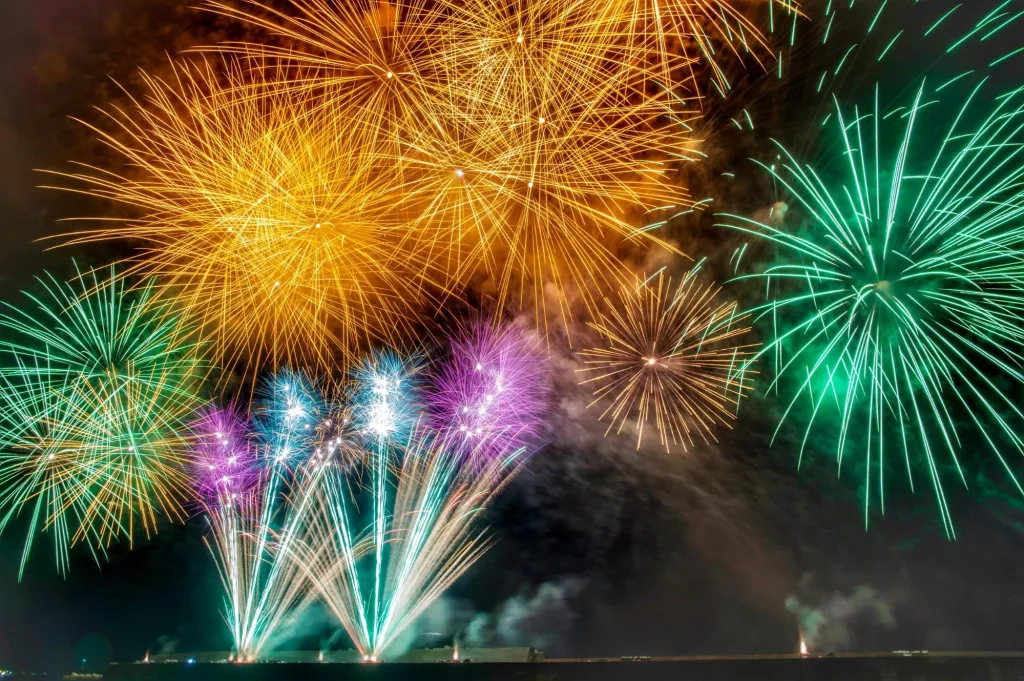
With the temperatures climbing and summer in full swing across Japan, locals and visitors alike turn to seasonal festivities to take their minds off the heat. And what could be a better way to celebrate the Japanese summer than with dazzling, flamboyant fireworks?
Over the years, fireworks displays, or hanabi (literally translating to ‘flower fire’) – a staple of any midsummer celebration – have evolved beyond their traditional meaning of warding off evil spirits and comforting the departed, into true works of art appreciated by everyone, young and old. You simply haven't experienced a proper Japanese summer until you've been to a fireworks festival.
Did you know that all of "Japan's Three Great Fireworks Festivals" – the Omagari National Fireworks Competition, the Nagaoka Fireworks Festival, and the Tsuchiura All Japan Fireworks Competition – are located in eastern Japan? Between these and the five other festivals we'll be looking at in this article, this region is the obvious choice for experiencing the finest light shows Japan has to offer!
1. Omagari National Fireworks Competition (全国花火競技大会「大曲の花火」) — Akita
 Image credit: KANSEI
Image credit: KANSEI
With roots tracing back to 1910 in the Meiji Period, the competition is in its 93rd rendition this year. But this event is more than just a display of fireworks. The Omagari National Fireworks Competition, or Omagari no Hanabi, brings together pyrotechnicians from all across the country to put forth their best on display for the Prime Minister’s Prize.
With only the best teams allowed to take part in this competition, which represents the peak of Japanese, you can be assured of nothing short of spectacular displays.
A defining feature of this competition, is a daytime category that starts in the early evening, as well as other lineups in the program, such as displays by the past year’s winner and by the event’s sponsors.
 Image credit: Tea
Image credit: Tea
The event draws over 760,000 visitors each year — a staggering number considering that the prefecture’s population is just above 980,000 — making this event both one of the Three Great Fireworks Festivals and Three Great Fireworks Competitions in all of Japan.
While attending the event is entirely free (make sure to bring your own mat to sit on), ticketed seats are also available. If you’re willing to fork out 3,000 yen, you can be assured of a seat in the prime viewing area to take in the spectacle in its full glory.
 Image credit: Syuzo Tsushima
Image credit: Syuzo Tsushima
If you’re unable to make it for the grand event in the summer, you’ll still be able to get a taste of it at one of the three ‘seasonal chapters’, which falls on the remaining seasons in the year — each of them an hour and 20 minutes worth of bombastic colour and sound.
2. Nagaoka Fireworks Festival (長岡まつり大花火大会) — Niigata
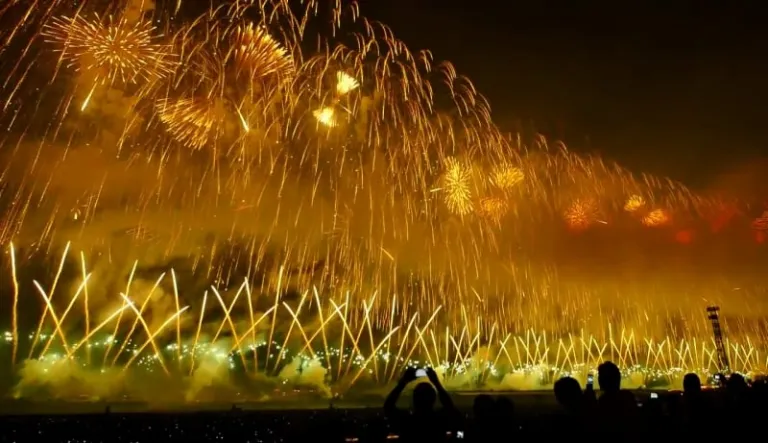 Image credit: 113icecream Japanese Fireworks
Image credit: 113icecream Japanese Fireworks
The Nagaoka Fireworks Festival was started in 1946 as a reconstruction event to mourn those who had perished during World War II, and today sees over 20,000 fireworks of various shapes and designs lighting up the night skies, making it another of Japan’s Three Great Fireworks Festivals. Happening along the Shinano River, this 3-day festival features dazzling displays that attract over half a million viewers each year.
While the happen over the latter two days of the event, the first day is filled with just as many festivities, with mikoshi (portable Shinto shrine) parades, toro nagashi (where paper lanterns are sent adrift down the river) and traditional dance parades lining up in the programme. Being a summer matsuri (Japanese festival), you can be sure there won’t be a lack of yatai (food stalls) food to feast on and games to play!
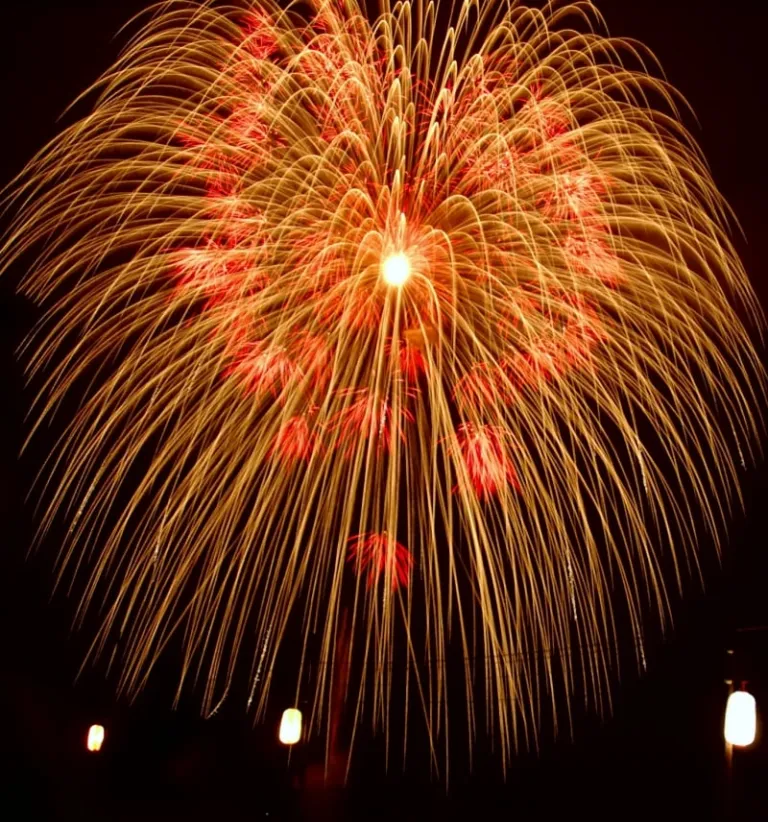 Image credit: Kropsoq
Image credit: Kropsoq
Be sure to catch the famed sanjakudama, massive 300-kilogram shells filled with 80 kilograms of explosives (the maximum weight allowed by law), that, when launched, fill the night sky with countless falling stars.
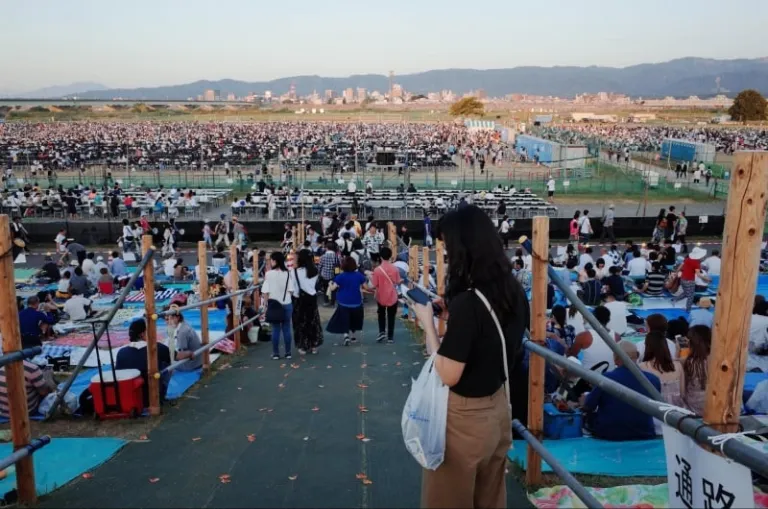 Image credit: SHANGCHIEH
Image credit: SHANGCHIEH
Grand Tickets are available for visitors who want a front seat to the show, though if you would rather watch the show for free, be sure to head down early if you want to get a good spot! Some recommended places to view the show from are around the Chousei Bridge (長生橋) and the Oteo Bridge (大手大橋).
3. Lake Suwa Fireworks Festival (諏訪湖祭湖上花火大会) — Nagano
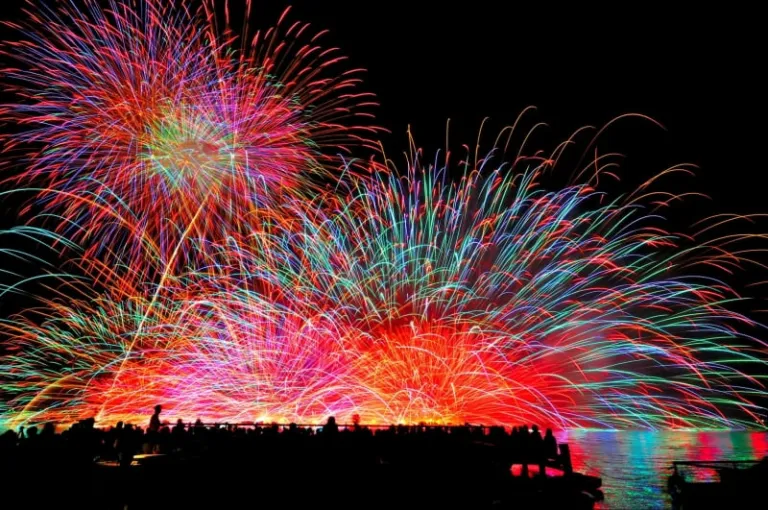 Image credit: 躙
Image credit: 躙
Surrounded by the Japanese Alps and mountains in almost every direction, you can be sure to hear the reverberations of the here as they echo back to you — a bone-rattling viewing experience unique to the Lake Suwa Fireworks Festival.
This is the single biggest display in Japan, with 40,000 being set off over Lake Suwa in one night. Having started shortly after World War II to help brighten the spirits of the devastated people, the festival will be having its 71st rendition this year.
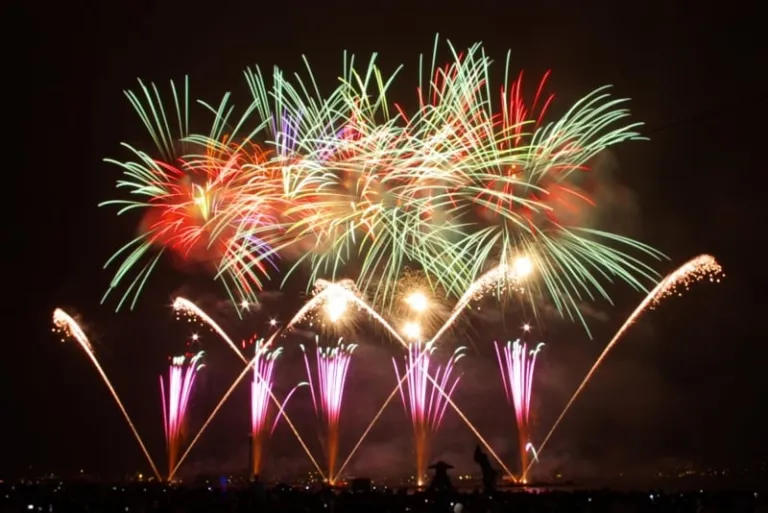 Image credit: Ponta2
Image credit: Ponta2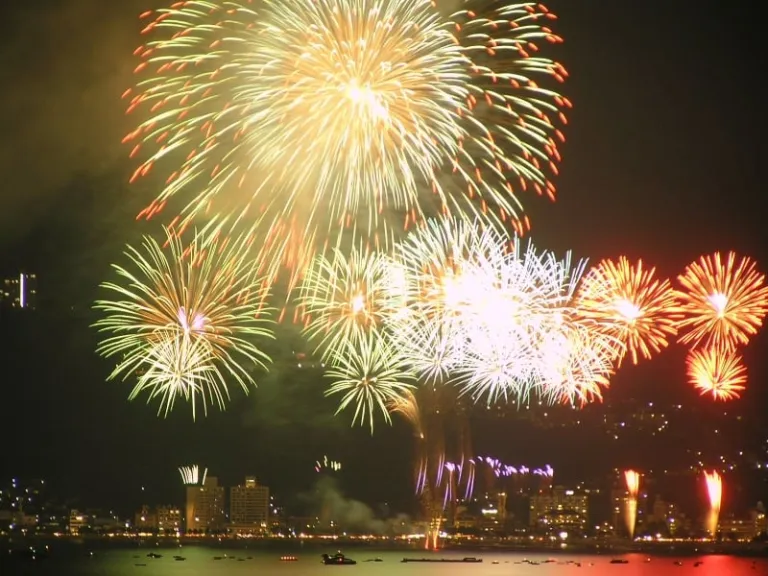 Image credit: 信州高原青馬写真クラブ
Image credit: 信州高原青馬写真クラブ
Highlights of the festival include the breathtaking water star mine display, with being launched in succession from lake and stretching across 2 kilometres of night sky.
 Image credit: mad.jaguar
Image credit: mad.jaguar
The event attracts approximately 500,000 people each year, some arriving as early as the morning of the event, so be prepared to head there early if you want a good spot along the river! Tickets for reserved and non-reserved seats are also available for purchase on the website.
Alternatively, if you can’t catch the display on 15 August, there are still ways to experience the festival:
Every summer night between end July to end August (except 15 August), there will be a 15-minute show at Lake Suwa starting at about 8.30pm.
The National New Fireworks Competition (全国新作花火競技大会) will be held in early September at Lake Suwa, showcasing experimental, avant-garde — about 18,000 fireworks which you may not have seen before, will be on display, certainly making for a spectacle!
4. Aomori Nebuta Fireworks Festival (青森花火大会) — Aomori
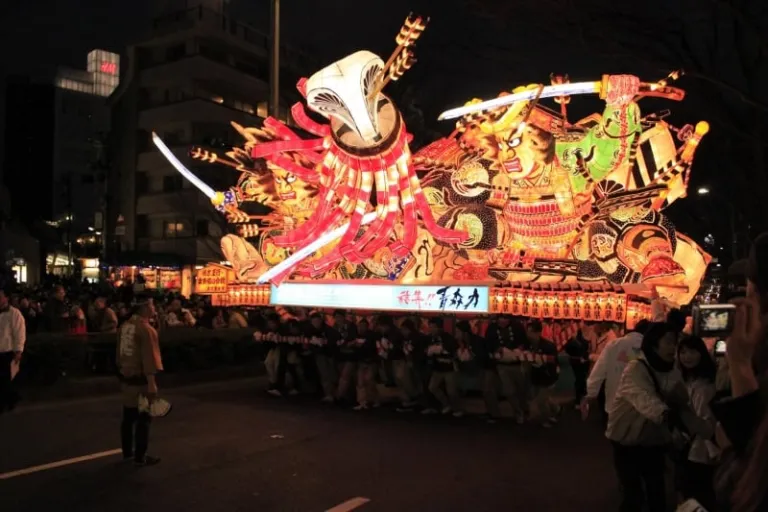 Image credit: POHAN CHEN
Image credit: POHAN CHEN
Being one of the Three Great Festivals of Tohoku, Aomori Nebuta Festival is filled with festivities through its 6-day itinerary, with the main highlights of this festival being the brightly lit colourful nebuta and the lively street procession.
Read also: 5 Biggest Summer Festivals in Tohoku You Must Catch (and the History Behind Them)!
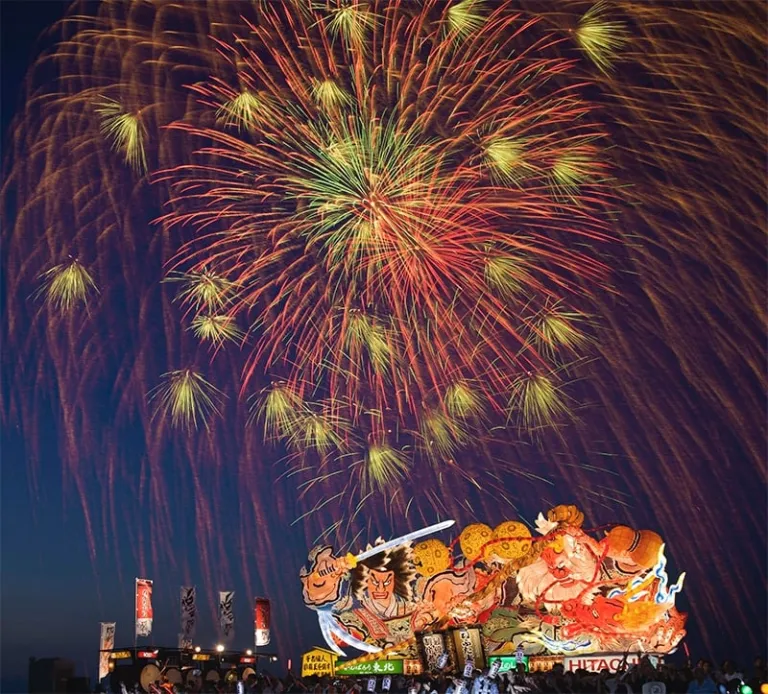 Image credit: East Japan Railway Company
Image credit: East Japan Railway Company
The display at the conclusion of the main festival, Aomori Nebuta Fireworks Festival is also a sight in itself, as the large floats themselves join in the final show in a sea of processions along Aomori Bay.
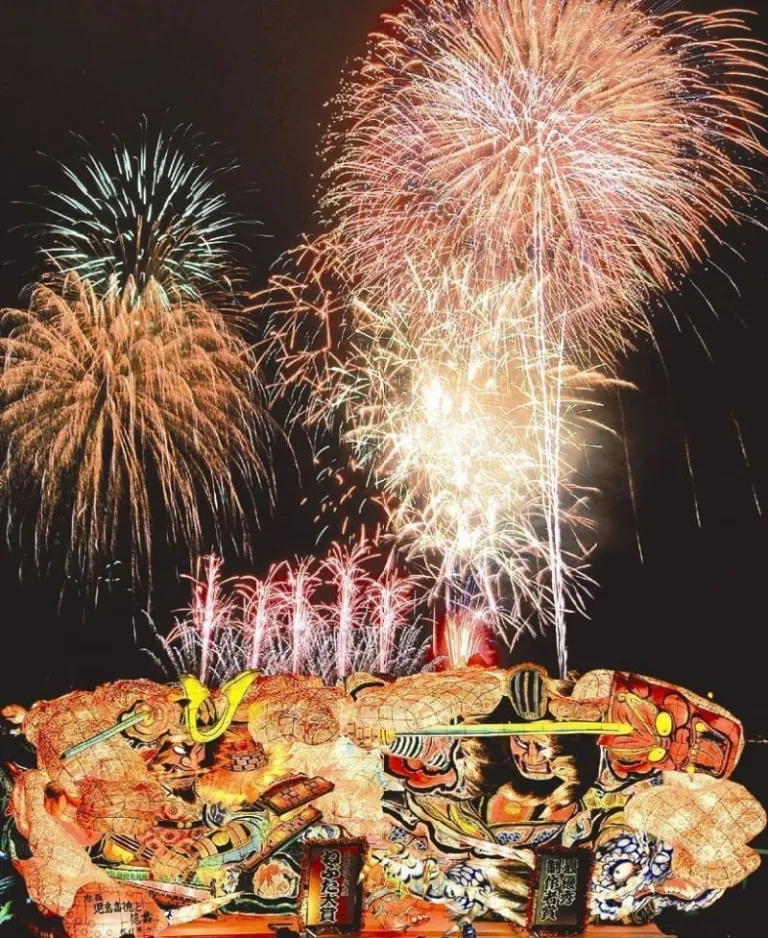 Image credit: Must-See Japan
Image credit: Must-See Japan
Grab some delicious seafood and festival eats from the yatai stalls before heading down to Aomori Bay to catch 11,000 fireworks lighting up the night sky.
5. Sendai Tanabata Fireworks Festival (仙台七夕花火祭) — Miyagi
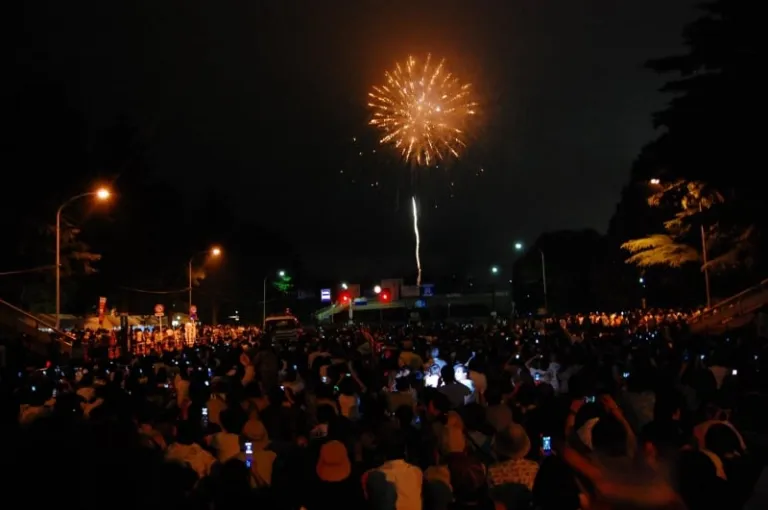 Image credit: Sendai Blog
Image credit: Sendai Blog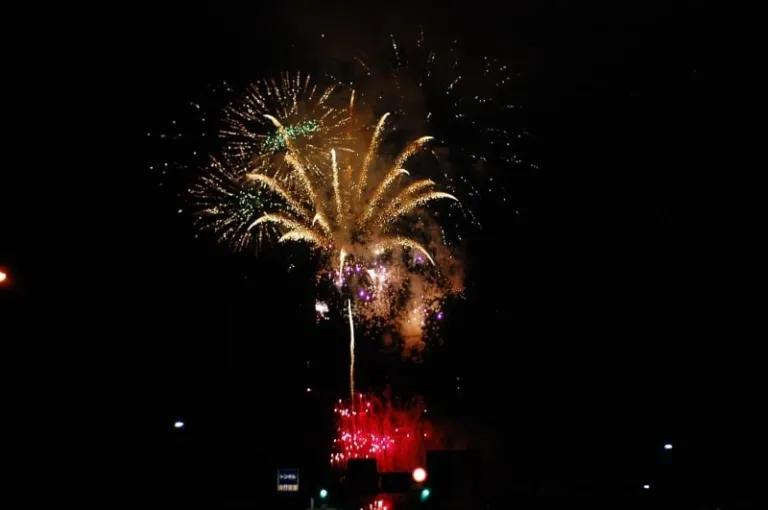 Image credit: Sendai Blog
Image credit: Sendai Blog
Held on the eve of the colourful Sendai Tanabata Festival, 16,000 fill the night sky at the Sendai Tanabata Fireworks Festival to commemorate the start of the celebrations. While festivals typically happen at waterfronts like rivers and bays, the set off here are specially done so in the middle of the city, so it’s possible to behold wherever you are in the city. That being said, the best spot to view the pyrotechnics is in Nishi Park, though you’d have to jostle with the crowd for a spot!
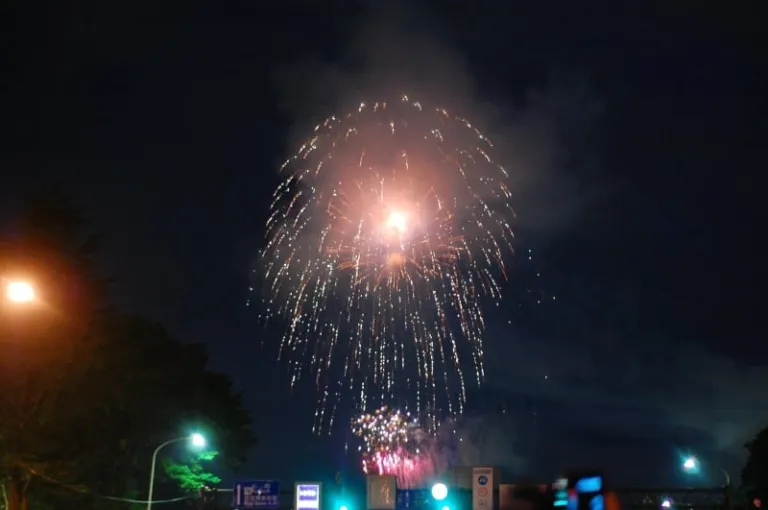 Image credit: Sendai Blog
Image credit: Sendai Blog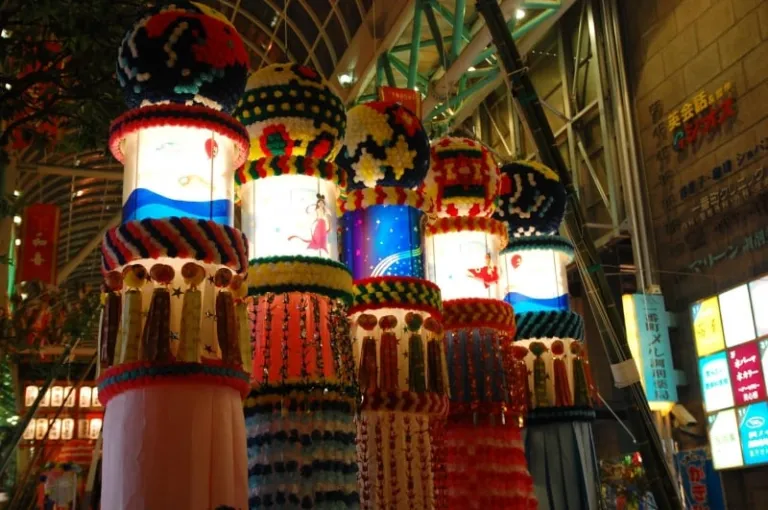 Image credit: Sendai Blog
Image credit: Sendai Blog
This famous festival is well known for thousands of colourful fukinagashi, or paper streamers that line the city’s shopping arcades in commemoration of Tanabata, a traditional event with astrological origins.
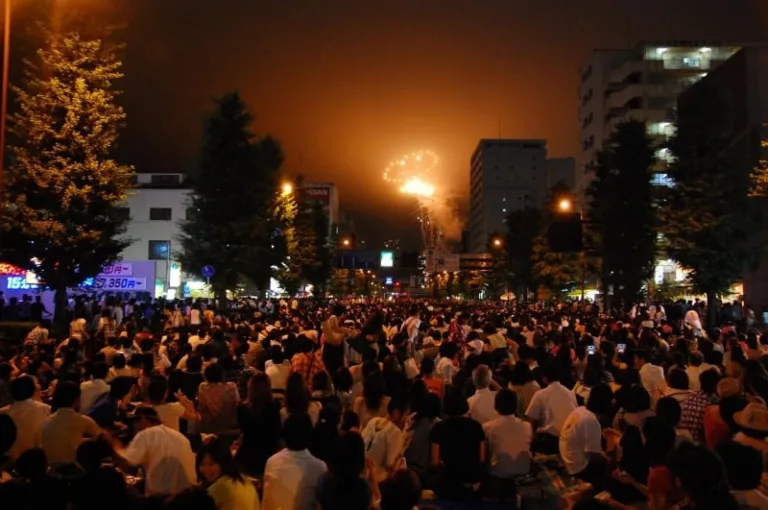 Image credit: Sendai Blog
Image credit: Sendai Blog Image credit: Sendai Blog
Image credit: Sendai Blog
A variety of activities and attractions are also lined up throughout the city centre, such as
delicious yatai food, the bon odori mass dance and a variety of traditional performances.
6. Akagawa Fireworks Festival (赤川花火大会) — Yamagata
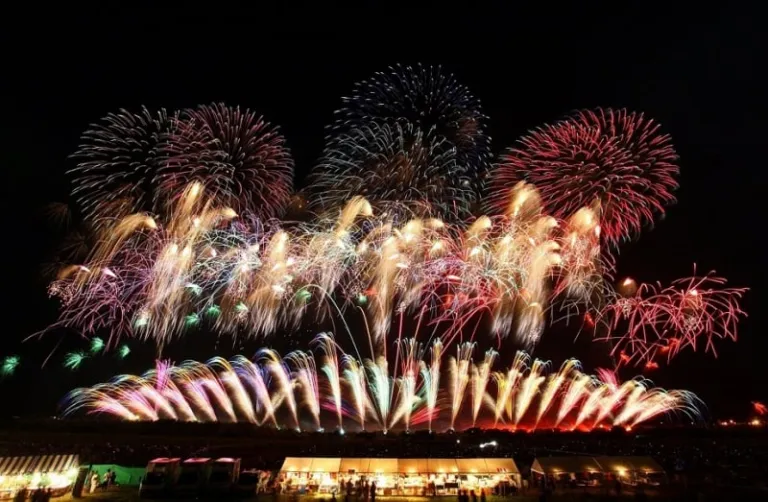 Image credit: Experience Tsuruoka
Image credit: Experience Tsuruoka
Over 25,000 people flock to the banks of Akagawa (‘red river’) for the Akagawa Fireworks Festival, livening the usually small and quiet town of Tsuruoka, though for good reason.
Roughly 12,000 are set off in this hour-and-a-half festival, which is both a festival and a competition for the best displays among various manufacturers. Having started in 1991, the festival is one of the Top 10 Fireworks Festivals in Japan and will be in its 29th rendition this year.
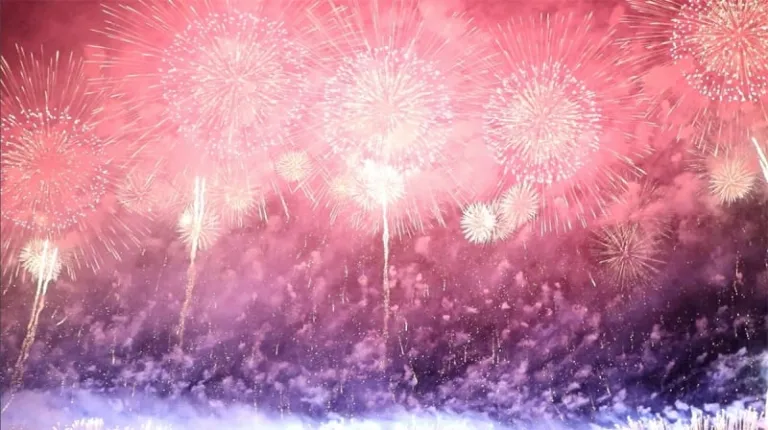 Image credit: Akagawa Fireworks Festival Facebook page
Image credit: Akagawa Fireworks Festival Facebook page
Some special highlights from last year’s festival include animated fireworks from Yamanashi manufacturer Marugo, with a video of it on Twitter garnering over 2 million views, and the “Moving Star” hanabi from Nagano-based Tamuraenka whose flickers are reminiscent of twinkling fairy lights.
While it is easier to obtain the tickets for reserved seats in this festival, it is said to be progressively difficult over the years as the festival gains popularity. If you are looking to get a good spot in the free sitting area, however, be sure to head down early as the area opens for visitors at 6:45pm.
Other Fireworks Festivals Near Tokyo
7. Tsuchiura All Japan Fireworks Competition (土浦全国花火競技大会) — Ibaraki
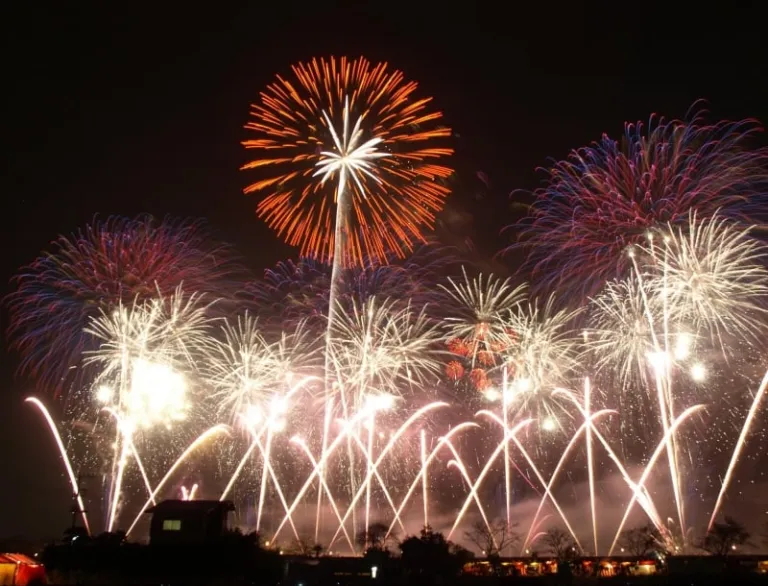 Image credit: inoc
Image credit: inoc
Like the Omagari National Fireworks Competition, the Tsuchiura All Japan Fireworks Competition is one of Japan’s Three Great Fireworks Festivals and Three Great Fireworks Competitions. The event was started in 1925 by a Buddhist priest who wanted to help business people from recession and to remember pilots who had died in battle, and today showcases innovative and brilliant works that amaze its visitors each year.
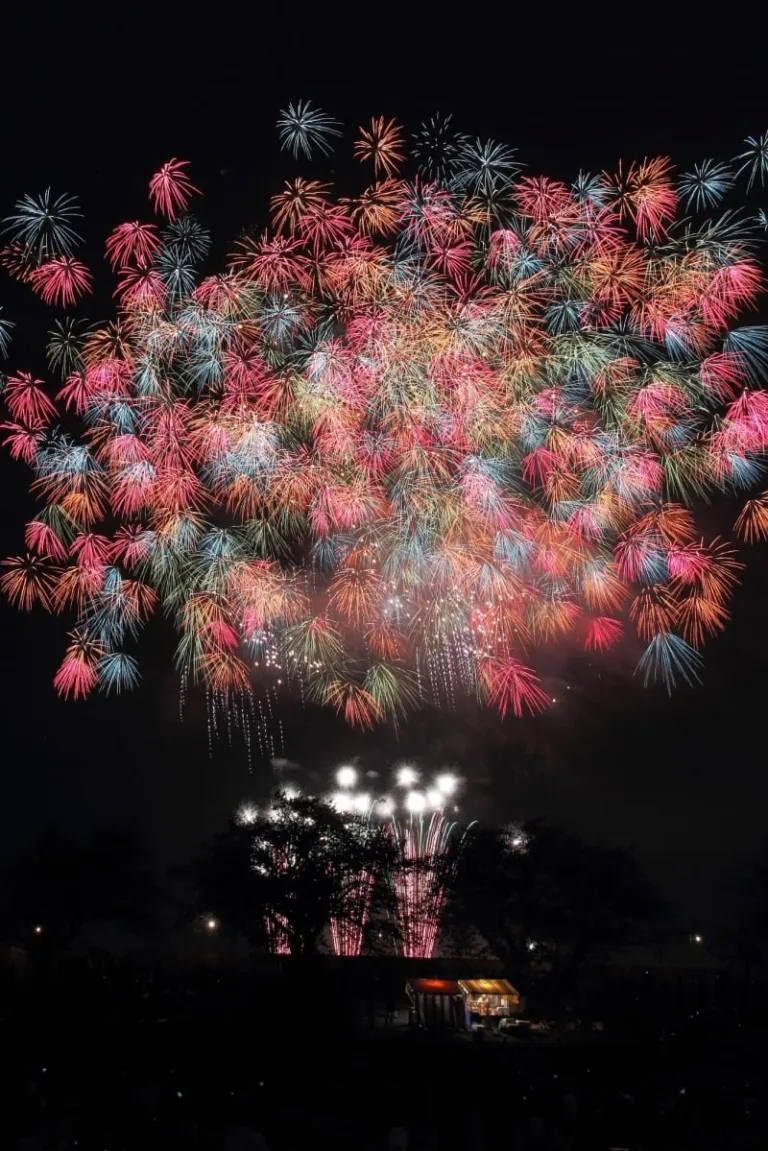 Image credit: 河田 貫成
Image credit: 河田 貫成
This competition brings pyrotechnicians from all over Japan to compete in three categories: starmines, size 10 shells and original displays. The spectacular show lasts for 2 and a half hours, which you can enjoy with snacks from the street stalls set up for the festival.
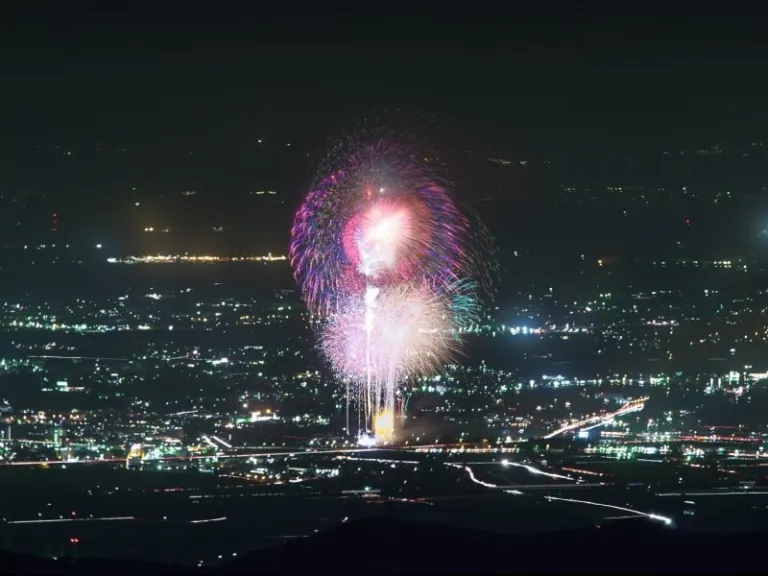 Image credit: Daisuke K
Image credit: Daisuke K
8. Sumida River Fireworks Festival (隅田川花火大会) — Tokyo
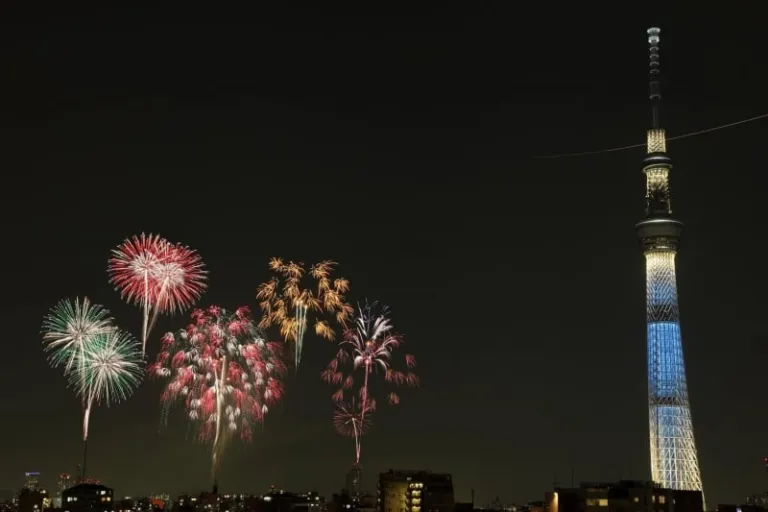 Image credit: てんどん
Image credit: てんどん
Probably one of the most well-known festivals in Japan, over a million people flock to the Sumida River Fireworks Festival to catch around 20,000 fireworks lighting up the cityscape each year. With its official start dating back to 1733 in the Edo period, spectators today can either catch a glimpse of the spectacle from the river banks or from cruise ships on the river.
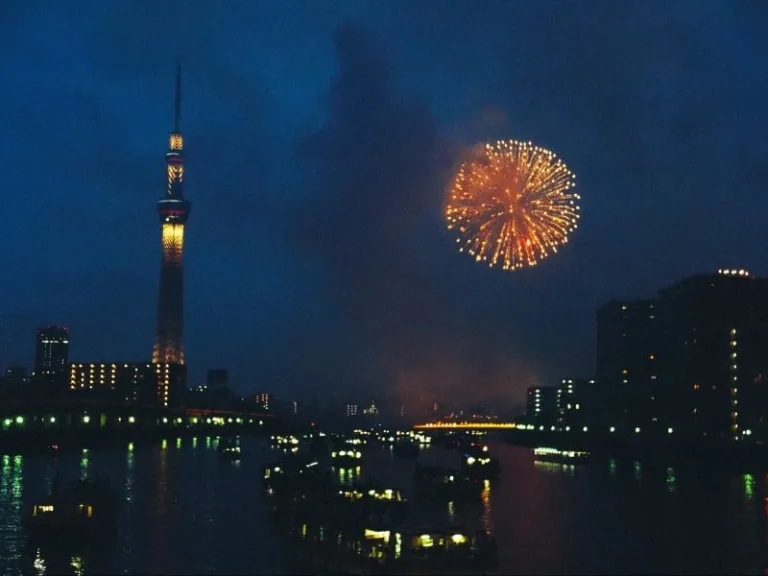 Image credit: Dick Thomas Johnson
Image credit: Dick Thomas Johnson
With this festival happening right in the heart of the capital city, competition is fierce for good spots to view the , with Shiori Park and Oyokogawa Water Park being relatively less congested viewing spots.
Otherwise, you have many more amazing festivals to choose from all around eastern Japan!
Fireworks are truly the quintessential sight of the Japanese summer, the hallmark of the season’s celebrations. It’s probably even safe to say that many would gladly take on the summer heat just to be able to look up into the sky and marvel at these luminous beauties.
Published at
About Author
Gabriel Oh
Subscribe our Newsletter
Get our weekly tips and travel news!
Recommended Articles
10 Best Things to Do in Los Angeles 10 Commandments for Responsible Travel Flexing Spread the good word!
10 Cutest Cafes in Japan That Are Totally One of a Kind From Pikachu snacks to Totoro cream puffs, here are 10 themed cafes in Japan that prove café hopping should be part of your travel itinerary.
10-day Christmas and New Year Japan Trip: Complete Travel Itinerary Celebrate Christmas and New Year in Japan with this 10-day holiday vacation itinerary packed with Tokyo lights, Kyoto charm, and Osaka adventures.
10 Fairytale Castles In Europe Filipinos Need To See! Permission to feel like royalty even for a day?!
Latest Articles
Pangasinan Town Now Accepts Digital Payments in Markets and Transport No cash? No problem. Alcala, Pangasinan is officially in its digital era.
Pop Mart PH Opens Permanent Flagship Store in SM Megamall Labubu and Hirono have arrived! Check out holiday hours and event recaps here!
Chen of EXO Arcadia Concert Manila 2026: Tickets, Dates, and Perks Ticket info and fan perks
TLC Playpark: Free Christmas Destination in Taguig, Opening Hours, and Commute Guide Learn what to expect and how to get to TLC Playpark in Brgy. Lower Bicutan Taguig via C5 and MRT-3!
Free MRT and LRT Rides for LGBTQIA+ Members and Solo Parents Today Who rides free today

